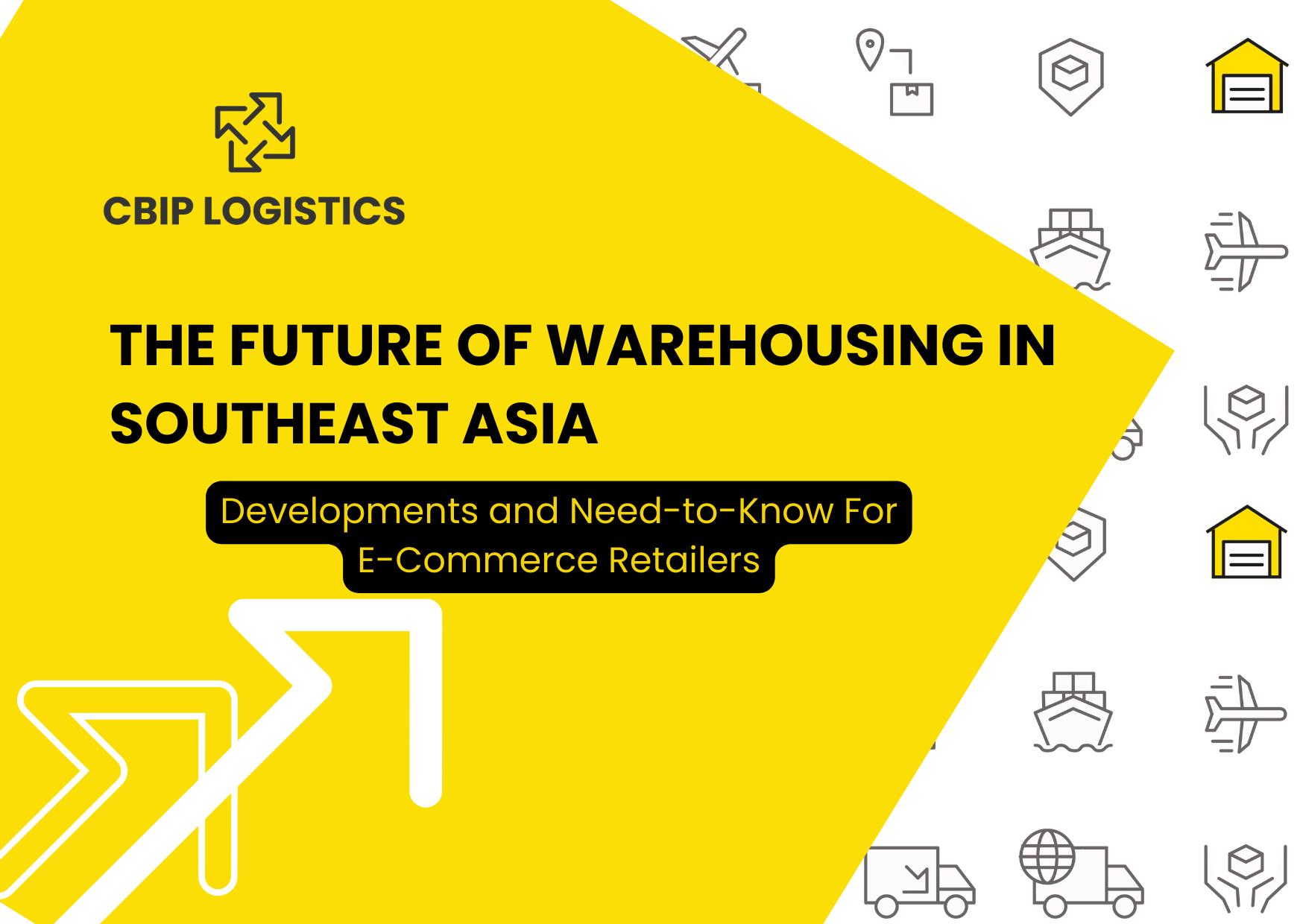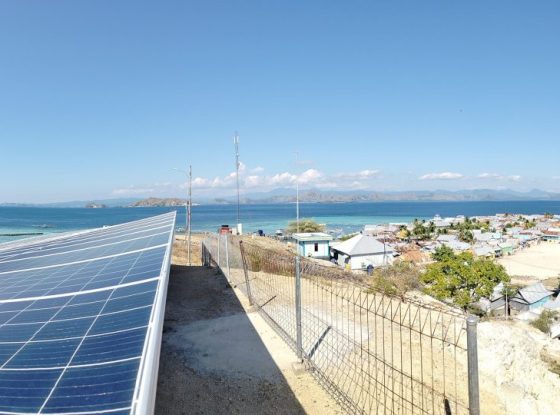THE FUTURE OF WAREHOUSING IN SOUTHEAST ASIA

A lot has changed over the past decade or so in Southeast Asia. As a result of COVID-19-related factors, growth has exploded. E-commerce sales throughout the 11 nations that comprise APAC increased fivefold annually between 2016 and 2021.
With all that demand, infrastructural changes need to be made. The region also is experiencing explosive growth in manufacturing, particularly in Vietnam, so they need space to store raw goods, and finished products, as well as to store inventory and distribute goods.
The region’s storage sector is going through a major stage of transition right now, with lots of foreign investment and government projects. Currently, the Asia Pacific region holds the largest market share in the world for warehouse and storage services, and more development is underway.
In this article, we want to discuss how the warehousing and fulfillment sector in the region looks, and how trends that will shape the warehouses of the future are already underway. Let’s take a look at the logistics environment fostering the changes, and consider three of the top trends shaping the future of warehousing in Southeast Asia.
New e-commerce demand means different types of warehouses are needed
Thanks to improved internet connectivity and higher levels of disposable income, internet retail sales in the region during the pandemic grew from 495 billion USD to an estimated 581 billion.
One of the greatest challenges in all this growth is the switch in the types of logistics and storage needed. A couple of decades ago, most of the logistics and storage solutions in Southeast Asia were set up to service big box retailers.
That means that there was very little infrastructure and transportation that would work for e-commerce.
Over the past 5 years, remarkable changes have taken place in the region in support of e-commerce logistics. We now see different types of storage solutions, designed for fulfilling orders and storing smaller quantities of inventory in a way that makes it easy to pick them off a shelf quickly.
New industry continues to bring new demands in warehousing to the region. Let’s take a look at three ways that the region’s warehouses are evolving in 2024 and on.
1. Warehouse sizes are changing — and not all in the same direction
Due to high land costs and densely populated urban areas, multi-story warehouses have been popular in Asia for a couple of decades now. One of Hong Kong’s tallest warehouses is a 22-storey fulfillment center, and that is over 20 years old.
One might naturally assume that warehouse sizes would continue to expand with demand. In many places, mega-huge, multistory warehouses are still being built or otherwise updated to utilize new technologies. This trend is particularly prevalent in markets like Hong Kong and Singapore, a nation that has one of the highest measures of warehouse space per capita rates in Asia.
However, in many Southeast Asian countries, shrinking warehousing spaces are the new trend.
Why? Much of the demand for inventory storage and fulfillment exists near highly populated areas. That means that space is limited. Added to that, many more deliveries include items that customers need for daily life; things that are perishable, like groceries, that need to be delivered quickly and efficiently.
It’s not just a lack of space and the need for speedy last-mile fulfillment pushing the region towards teeny-tiny warehousing. As e-commerce has expanded, many new entrants have popped up in the industry.
Some of those entrants have very small inventories. If they don’t want to store products in their homes but cannot afford the overhead cost associated with a regular warehouse, what do they do?
In Indonesia, a startup called Crewdable aims to help these small sellers out by renting out small, affordable spaces in centrally located storage facilities for e-commerce sellers to use.
This trend, referred to as microwarehousing, or microfulfillment, makes e-commerce selling more approachable to those looking to start a business with very little capital. Plus, it makes it easier for companies to get perishable items like food and medicines to customers with very little risk of spoilage or incident in the last mile.
2. Big tech overhauls are already underway
Advancements in tech have played a significant role in market growth for the region. Driven by necessity during the pandemic, the use of IoT helped streamline fulfillment to where it needed to be to satisfy exploding e-commerce demand.
Apart from the widespread use of WMS (warehouse management systems), automation has found its way into the warehouses of Southeast Asia in a number of other iterations.
One of the most popular automated technologies used in the warehouse is the autonomous vehicle.
Autonomous vehicles are forklifts, pallet trucks, or small-carry robots that have been programmed to do their job without needing to be controlled in real-time by a human. They are programmed to carry out tasks autonomously, with the help of a human when the task becomes too specific or a special problem arises.
This kind of tech has already started to pop up in the region, particularly in high-tech nations like Hong Kong and Singapore. However, although there have been big improvements in nations like Malaysia and Vietnam over the past five years, much of the region still has a ways to go when it comes to technological adoption in logistics.
The challenge for the next five years will be for logistics companies in the region to perfect their smart warehouses and train employees properly with the new automated technologies.
3. Logistics investments to continue
With the level of technological and infrastructural advancement needed to help the region’s e-commerce logistics flourish, some major investment is needed.
Through all of the 11 nations in Southeast Asia, foreign direct investment grew 40% between the years 2017 and 2022. International players are continuing to strategically invest, and in particular, they are investing in logistics to create regional logistics networks.
One of the key areas investors are focusing on is storage and fulfillment. Demand is high across the region, and companies eager to get in on the action are buying up land and warehouse space when they can. From smart warehouses to micro storage spaces, the region is seeing new facilities popping up left and right.
All this development is great for economic growth, but development remains fragmented.
Over the next five to ten years, we will hopefully see more consistent development, as well as private entities and governments working together to create an easily navigable infrastructure for logistics.
Get the best in warehousing with CBIP Logistics
Technology changes happen fast, and you have to keep updating to make sure your workflows stay in step with competitors. As an e-commerce retailer, you have enough to worry about keeping your business running and building your brand.
Why not let an experienced, Hong Kong-based 4PL set up and manage your logistics in Southeast Asia for you?
As a 4PL, we do not own the warehouses we work with. Instead, we have a network of warehouses, fulfillment centers, and other logistics providers throughout the world that our clients use.
How does it work? We simply meet with you, get to know your business goals and challenges, and design your logistics operation for you.
As your single contact point for logistics, we link every part of your logistics chain together, giving you access to crucial data like key performance indicators, tracking, and inventory management info, all from our central, WMS API platform.
Source : cbilogistics.com



